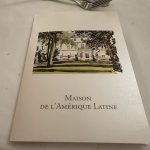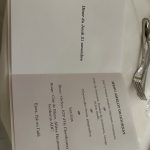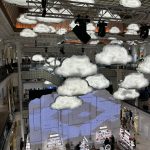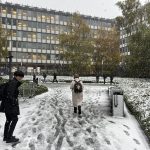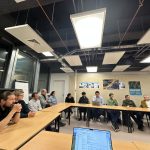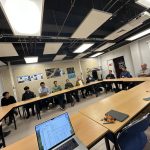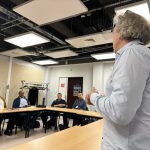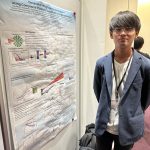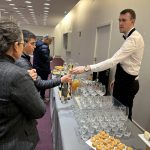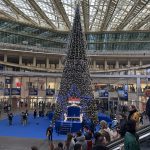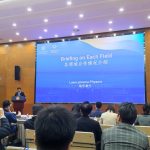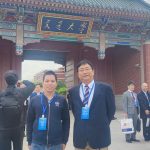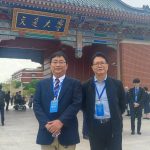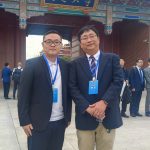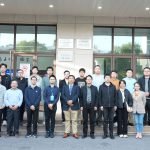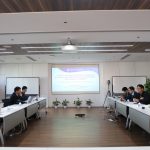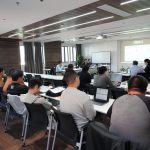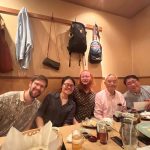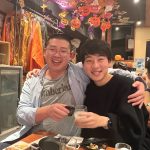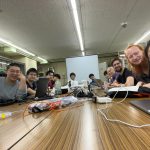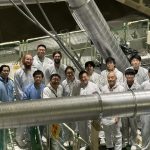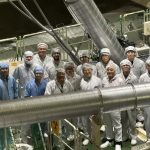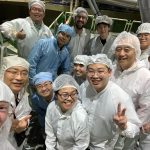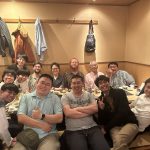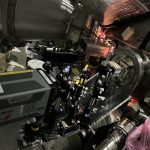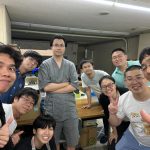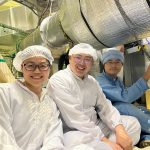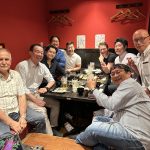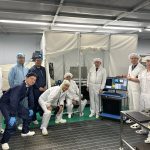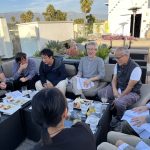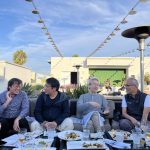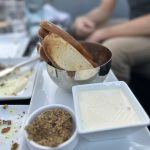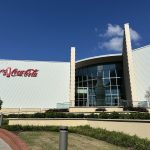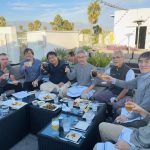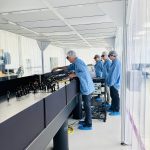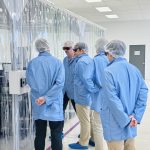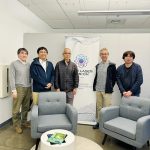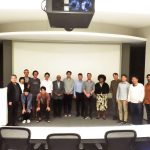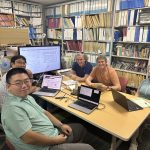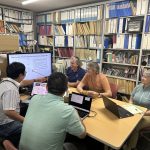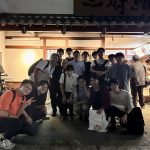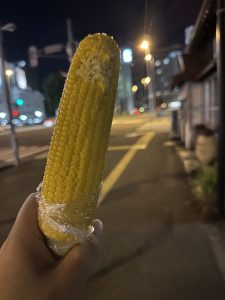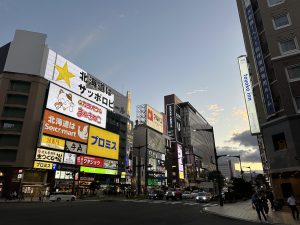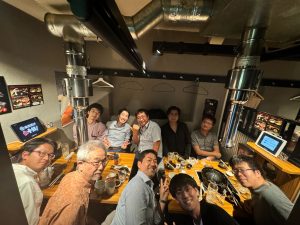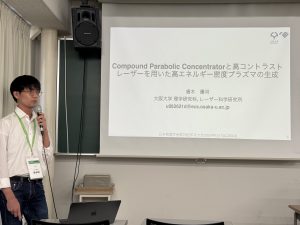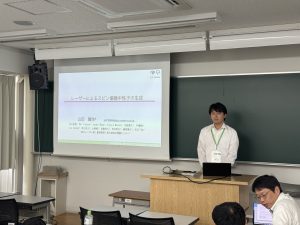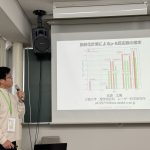Detail Page
2024.11.23
Partipation of RPHDM2024 conference
Fujioka-san, Dun-kun, and Karaki-kun attended the 20th International Workshop on Radiative Properties of Hot Dense Matter (RPHDM2024)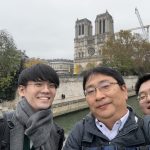 , held in Sorbonne University, Paris, France, from November 18 to 22, 2024. This workshop focuses on advancing the understanding of the radiative properties of hot, dense plasmas, including opacity, emissivity, and radiative transfer in extreme environments created by high-power lasers and X-ray free-electron lasers (XFELs) etc.. Radiative properties are crucial for understanding astrophysical plasmas and diagnosing laboratory plasmas’ temperature and density. During the workshop, they engaged in fruitful discussions with scientists from France and the United States on opacity measurements of hot, dense plasmas, uncovering several promising opportunities for collaborative research. Outside of the workshop, they also enjoyed the rich culture of Paris, indulging in its cuisine, sightseeing, and shopping.
, held in Sorbonne University, Paris, France, from November 18 to 22, 2024. This workshop focuses on advancing the understanding of the radiative properties of hot, dense plasmas, including opacity, emissivity, and radiative transfer in extreme environments created by high-power lasers and X-ray free-electron lasers (XFELs) etc.. Radiative properties are crucial for understanding astrophysical plasmas and diagnosing laboratory plasmas’ temperature and density. During the workshop, they engaged in fruitful discussions with scientists from France and the United States on opacity measurements of hot, dense plasmas, uncovering several promising opportunities for collaborative research. Outside of the workshop, they also enjoyed the rich culture of Paris, indulging in its cuisine, sightseeing, and shopping.
2024.10.26
Collaborative experiment on magnetic reconnection
A collaborative experiment on magnetic reconnection was recently conducted with Princeton Plasma Physics Laboratory and Princeton University. Magnetic reconnection, a key process in particle acceleration in cosmic and astronomical environments, such as jet formation on the sun’s surface, also has significant implications for plasma confinement in fusion devices.
In this joint research, we employed the LFEX laser to irradiate a capacitor coil target, creating an intense magnetic field. Magnetic and electric fields were meticulously measured through proton radiography, and detailed plasma diagnostics were carried out using a laser interferometer. Princeton researchers—Professor Hantao Ji, Dr. Lan Gao, as well as Yang, Randon, and Geoffrey—visited ILE to contribute to the experiments and participate in in-depth discussions. Following our experiment, we enjoyed a traditional Japanese fugu (pufferfish) meal together.
2024.10.26
Instration of deformable mirrors
We have assembled new deformable mirrors (DFMs) offline to enhance the performance of the LFEX laser system, a kJ-class multi-PW laser system at Osaka University for high-energy-density physics, including laser fusion energy. This project is being carried out in collaboration with ILE, AKA Optics, Seven-Six, and Blue Laser Fusion Inc.. The DFM’s installation on the LFEX laser system will start soon.
2024.10.7
Participated to APS-DPP2024
Fujioka-san and Takizawa-san attended the annual meeting of the Division of Plasma Physics of the American Physical Society, held in Atlanta, GA. The event provided valuable insights through engaging presentations and productive discussions. On Thursday, Fujioka-san traveled to Santa Barbara to visit Blue Laser Fusion Inc., where he and Johzaki-san had a fruitful discussion and dinner with Prof. Nakamura (CEO), Dr. Ohta, Sunahara-san, and the wonderful staff.
2024.10.5
Visit of Dr. Delahaye and Dr. Koenig
Dr. Franck Delahaye of the Paris Observatory and Dr. Michel Koenig of LULI at the Ecole Polytechnique stayed at Osaka University for a week from September 29th to October 4th for collaborative research. This collaborative research is related to the measurement of X-ray opacity of plasma, and we discussed the analysis of experimental data obtained in the last year and research proposals for next year. We are planning to hold a roundtable meeting on opacity at the “Radiative Properties of Hot Dense Matter (RPHDM)” conference to be held in Paris in November 2024.
2024.9.19
JPS annual meeting
Some LF group members attended the annual meeting of the Physical Society of Japan held at Hokkaido University from September 16th to 19th. Prof. Fujioka gave an invited lecture on “High temporal- and spatial-resolved diagnostics o”f tangent, non-equilibrium, micro-scale plasmas produced by lasers”; Dr. Law gave a lecture on ‘Numerical Analysis of Ion Species Dependence in Particle Acceleration during Laser-Driven Magnetic Reconnection,’ Dr. Takizawa gave a lecture on ” combining a high-contrast laser and a cone-shaped target,” Mr. Karaki gave a talk on ‘Generation of high-energy-density plasma using Compound Parabolic Concentrator and high-contrast laser’, Mr. Matsubara gave a talk on ‘Estimation of the p-B reactions by radioactivity measurement.’ Mr. Yamada gave a talk on ‘Spin polarized neutron generation by using lasers.’ In addition to the various discussions, we also enjoyed the food.
2024.8.20
Law-san’s paper is published in HEDP journal
The article “Observation of Ion Species Energy Dependence on Charge-to-Mass Ratio in Laser-Driven Magnetic Reconnection Experiment” reports on an experimental study investigating magnetic reconnection using laser-generated plasma. The study focuses on how the energy of different ion species correlates with their charge-to-mass ratios during the reconnection process. The findings suggest a scaling relation where ion energies depend on the square of the charge-to-mass ratio, with significant implications for understanding particle acceleration in laboratory and cosmic plasma environments.
For more details, you can refer to the full article in High Energy Density Physics journal.
2024.8.6
Collaboration result published in Nuclear Fusion journal.
The manuscript “Formation of High Areal Density Core using an Efficient and Robust Implosion method for Fast Ignition” by Prof. Nagatomo and our team member explores an innovative approach to nuclear fusion energy. The study introduces a new fuel compression method called modified homogenous isentropic compression (M-HIC), designed to optimize the conditions for fast ignition fusion. By using precisely controlled step-pulse lasers, the researchers aim to compress fuel more efficiently, achieving the necessary conditions for ignition while minimizing entropy increases.
A notable feature of this approach is the “power dip” technique, which temporarily reduces the laser power before the final compression stage. This helps lower electron and ion temperatures near critical density, potentially reducing adverse effects from laser-plasma interactions.










